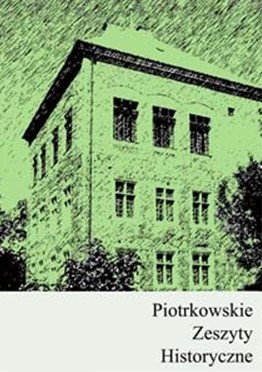Krakusi w Wojsku Polskim – rys historyczny
History of the Krakus in the Polish Army
Author(s): Łukasz PolitańskiSubject(s): Military history, Political history, Social history
Published by: Instytut Historii UJK - Filia w Piotrkowie Trybunalskim
Keywords: Polish Army; history of warfare
Summary/Abstract: The last formation of cavalry created in Poland during the inter war period was the Polish light cavalry also known as the Krakus. The history of the Krakus formation however, goes much further back to the beginning of the nineteenth century. In 1812, Napoleonic Campaigns’ experience presented high efficiency of light cavalry used for reconnaissance, screening and skirmishing the enemy which influenced the decision to form similar formations alongside the Grande Armée commanded by Napoleon. The name “Krakus” was established in Cracow when Prince J. Poniatowski’s stayed in the city with the army. It was most likely to highlight the national character of the formation and to oppose the French name of the Cos sacks. The cavalry’s name and bravery was brought into Emperor Napoleon’s attention who then reviewed the formation. Additionally, an important fact is that after the end of military actions, 200 troops from the Krakus formation took part in the funeral procession of Prince J. Poniatowski. The 19th century and the Polish national movements are continuous references to the tradition of this riding formation. The events from 1830/1831, 1846 and 1863/1864 showed just how important the Krakus were in Poland. Even after the col lapse of the January Uprising the tradition was not abandoned. In the Austrian Partition, the Krakus created “squadrons” which were small and sometimes consisting of only a few soldiers and unarmed groups of cavalries. These constituted a specific representative function during ceremonies taking place in Cracow. This tradition grew near Cracow. Austria, which invaded Poland saw the growing tradition and allowed to organize a volunteer Krakus Regiment for the duration of the war in 1866. The year 1866 brought an end to the glorious history of the Krakus force in the Polish military. The First World War period clearly showed the loss of their position over the years giving way to the Uhlan armies. Poland re gaining its independence did not bring relevant changes to the Krakus. There were few supporters of this formation in the young Polish Army. The idea of forming a volunteer cavalry which would be used for reconnaissance was again presented during the late 20’s of the20th century. The Krakus however passed the final test during the Polish campaign of 1939, when the formation was joined with particular infantry divisions. The history of the Krakus formation is full of examples of heroism and fortitude being demonstrated on the battlefield. In the case of sufficiently equipped and armed regular units, success was not surprising. The Krakus however with their constant equipment shortage created an example of stubbornness and fortitude.
Journal: Piotrkowskie Zeszyty Historyczne
- Issue Year: 18/2017
- Issue No: 1
- Page Range: 49-75
- Page Count: 27
- Language: Polish

